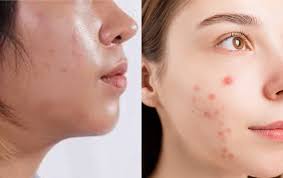Introduction
If you struggle with acne-prone skin, you’ve probably noticed how easily the wrong product can trigger breakouts. Two labels that matter most when shopping are fragrance-free and non-comedogenic. But what do they actually mean, and how can they help keep your skin clear? This guide breaks it down so you can confidently choose products that support, not sabotage, your skin.
Why Fragrance Can Irritate Acne-Prone Skin
Fragrance (both synthetic and natural essential oils) is one of the top causes of skin irritation. For acne-prone skin:
-
It can cause redness, stinging, or allergic reactions.
-
Fragrance increases inflammation, which may worsen existing acne.
-
Certain essential oils can clog pores or act as irritants.
For those with sensitive or acne-prone skin, fragrance-free products are the safest choice.
What Does “Non-Comedogenic” Mean?
“Non-comedogenic” means the product is formulated to not clog pores. Clogged pores (comedones) are the root of blackheads, whiteheads, and acne.
Why It Matters:
-
Oils and heavy emollients can block pores, trapping bacteria and leading to breakouts.
-
Non-comedogenic products are tested or designed with low-risk ingredients that keep pores clear.
Ingredients to Avoid in Acne-Prone Skin Products
-
Heavy oils like coconut oil, cocoa butter, lanolin
-
Artificial fragrance or parfum
-
Alcohol-heavy formulas (drying, can trigger rebound oil production)
Best Ingredients for Acne-Prone Skin
-
Niacinamide – calms redness, regulates oil
-
Salicylic Acid (BHA) – unclogs pores and exfoliates
-
Hyaluronic Acid – hydrates without heaviness
-
Panthenol & Allantoin – soothe irritation
-
Zinc Oxide (in sunscreens) – anti-inflammatory and pore-safe
How to Read Labels & Choose Safely
1. Look for “Fragrance-Free” (Not Just Unscented)
-
Fragrance-free means no added scent ingredients.
-
Unscented may still contain masking fragrance to hide odor.
2. Check for “Non-Comedogenic” Claims
-
Not always regulated, but a good guideline.
-
Research specific ingredients if you’re prone to breakouts.
3. Choose Lightweight Textures
-
Gel or water-based products for oily/acne-prone skin.
-
Avoid heavy creams unless formulated with proven non-comedogenic ingredients.
4. Patch Test First
Even safe products can cause reactions. Apply a small amount on your jawline for 24 hours before full use.
Building a Clear-Skin Routine
-
Cleanser: Gentle, sulfate-free, fragrance-free
-
Moisturizer: Lightweight gel or lotion with niacinamide/hyaluronic acid
-
Sunscreen: Mineral-based, non-comedogenic (zinc oxide/titanium dioxide)
-
Targeted Treatment (Optional): Salicylic acid or niacinamide serum
Key Takeaway
For acne-prone skin, less is more. Choosing fragrance-free, non-comedogenic products minimizes irritation and prevents clogged pores—two major acne triggers. Pairing this approach with gentle, halal-certified skincare ensures your routine is both safe and effective.
At Purelab Care, our formulations are designed to be clear-skin friendly: free from pore-clogging oils and irritating fragrances, while packed with clinically proven actives.



